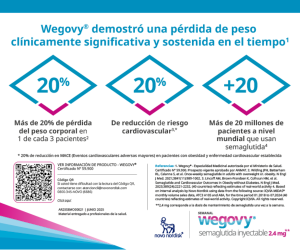Jornadas del Comité de Nefropatía de la Sociedad Argentina de Diabetes. Parte 2
DOI:
https://doi.org/10.47196/diab.v56i3.665Palabras clave:
diabetes mellitus, enfermedad renal crónica, alteraciones electrolíticas, metabolismo óseo mineral, dietaResumen
En el paciente con diabetes mellitus (DM) y enfermedad renal crónica (ERC), las alteraciones electrolíticas y metabólicas constituyen un verdadero desafío. En noviembre de 2021, el Comité de Nefropatía de la Sociedad Argentina de Diabetes realizó una jornada científica con el objetivo de actualizar las alteraciones hidroelectrolíticas y del metabolismo óseo mineral, y las consideraciones dietarias en ERC y DM.
Citas
I. Mena-Sánchez G, Babio N, Becerra-Tomás N, Martínez-González MÁ, Díaz-López A, Corella D, et al. Association between dairy product consumption and hyperuricemia in an elderly population with metabolic syndrome. Nutr Metab Cardiovasc Dis 2020;30(2):214-222.
II. Ramírez-Sandoval JC, Madero M. Treatment of hyperuricemia in chronic kidney disease. Contrib Nephrol 2018;192:135-146.
III. Johnson RJ, Bakris GL, Borghi C, Chonchol MB, Feldman D, Lanaspa MA, et al. Hyperuricemia, acute and chronic kidney disease, hypertension, and cardiovascular disease: report of a scientific workshop organized by the National Kidney Foundation. Am J Kidney Dis 2018;71(6):851-865.
IV. Xu L, Shi Y, Zhuang S, Liu N. Recent advances on uric acid transporters. Oncotarget 2017;8(59):100852-100862.
V. Li L, Zhang Y, Zeng C. Update on the epidemiology, genetics, and therapeutic options of hyperuricemia. Am J Transl Res 2020;12(7):3167-3181.
VI. Kielstein JT, Pontremoli R, Burnier M. Management of hyperuricemia in patients with chronic kidney disease: a focus on renal protection. Current Hypertension Reports 2020;22:102. doi: 10.1007/s11906-020-01116-3.
VII. Gliozzi M, Malara N, Muscoli S, Mollace V. The treatment of hyperuricemia. International Journal of Cardiology 2016;213:23-27.
VIII. Yipa K, Cohena RE, Pillingera MH. Asymptomatic hyperuricemia: is it really asymptomatic? Curr Opin Rheumatol 2020;32:71-79.
IX. Badve SV, Pascoe EM, Tiku A, Boudville N, Brown FG, Cass A, et al. Effects of allopurinol on the progression of chronic kidney disease. N Engl J Med 2020;382:2504-13.
X. Hovind P, Rossing P, Tarnow L, Johnson RJ, Parving HH. Serum uric acid as a predictor for development of diabetic nephropathy in type 1 diabetes: an inception cohort study. Diabetes 2009;58:1668-1671.
XI. Pacilli A, Viazzi F, Fioretto P, Giorda C, Ceriello A, Genovese S, Russo G, Guida P, Pontremoli R, De Cosmo S; AMD-Annals Study Group. Epidemiology of diabetic kidney disease in adult patients with T1D in Italy. Diabetes Metab Res Rev 2017;33(4).
XII. Zoppini G, Targher G, Chonchol M, Ortalda V, Abaterusso C, Pichiri I, Negri C, Bonora E. Serum uric acid levels and incident chronic kidney disease in patients with type 2 diabetes and preserved kidney function. Diabetes Care 2012;35:99-104.
XIII. Hayashino Y, Okamura S, Tsujii S, Ishii H. Association of serum uric acid levels with the risk of development or progression of albuminuria among Japanese patients with type 2 diabetes. Acta Diabetol 2016;53:599-607.
XIV. Choi HK, Ford ES. Haemoglobin A1c, fasting glucose, serum C-peptide and insulin resistance in relation to serum uric acid levels. The Third National Health and Nutrition Examination Survey. Rheumatology 2008;47:713-717.
XV. Krishnan E, Pandya BJ, Chung L, Hariri A, Dabbous O. Hyperuricemia in young adults and risk of insulin resistance, prediabetes, and diabetes: a 15-year follow-up study. Am J Epidemiol 2012;176(2):108-116.
XVI. Johnson RJ, Pérez-Pozo SE, Sautin YY, Manitius J, Sánchez-Lozada LG, Feig DI, Shafiu M, Segal M, Glassock RJ, Shimada M, Roncal C, Nakagawa T. Hypothesis: could excessive fructose intake and uric acid cause type 2 diabetes? Endocrine Reviews 2009;(30):96-116.
XVII. Chen J, Liu Y, Guo H, Wang B, Sun Z, Yu J. Urine glucose excretion attenuates the association between lipid accumulation product and serum uric acid in subjects with prediabetes. Diabetes, metabolic syndrome and obesity. Targets and Therapy 2020;(13): 2297-2305.
XVIII. Valsaraj R, Singh AK, Gangopadhyay KK, Ghoshdastidar BT, Goyal G, Batin M. Management of asymptomatic hyperuricemia: Integrated Diabetes & Endocrine Academy (IDEA) consensus statement. Diabetes & Metabolic Syndrome: Clinical Research &Reviews 2020;14: 93e100.
XIX. Khanna D, Fitzgerald JD, Khanna PP, Bae S, Singh MK, Neogi T, et al. 2012 American College of Rheumatology Guidelines for Management of Gout. Part 1: Systematic non pharmacologic and pharmacologic therapeutic approaches to hyperuricemia. Arthritis Care & Research 2012; 64(10):1431-1446.
XX. Richette P, Doherty M, Pascual E, Barskova V, Becce F, Castañeda-Sanabria J, et al. 2016 updated EULAR evidence-based recommendations for the management of gout. Ann Rheum Dis 2017;76:29-42.
XXI. Hisatome I, Ichida K, Mineo I, Ohtahara A, Ogino K, Kuwabara M, et al. Japanese Society of Gout and Uric & Nucleic Acids 2019 Guidelines for Management of Hyperuricemia and Gout. Gout and Uric & Nucleic Acids 2020;44 (Supp).
XXII. Doria A, Galecki AT, Spino C, Pop‑Busui R, Cherney DZ, Lingvay I. Serum urate lowering with allopurinol and kidney function in type 1 diabetes. N Engl J Med 2020; 382:2493-503.
XXIII. Voelker R. Another warning for febuxostat. JAMA 2019;321(13):1245.
Descargas
Publicado
Número
Sección
Licencia
Derechos de autor 2022 a nombre de los autores. Derechos de reproducción: Sociedad Argentina de Diabetes

Esta obra está bajo una licencia internacional Creative Commons Atribución-NoComercial-SinDerivadas 4.0.
Dirección Nacional de Derecho de Autor, Exp. N° 5.333.129. Instituto Nacional de la Propiedad Industrial, Marca «Revista de la Sociedad Argentina de Diabetes - Asociación Civil» N° de concesión 2.605.405 y N° de disposición 1.404/13.
La Revista de la SAD está licenciada bajo Licencia Creative Commons Atribución – No Comercial – Sin Obra Derivada 4.0 Internacional.
Por otra parte, la Revista SAD permite que los autores mantengan los derechos de autor sin restricciones.




























